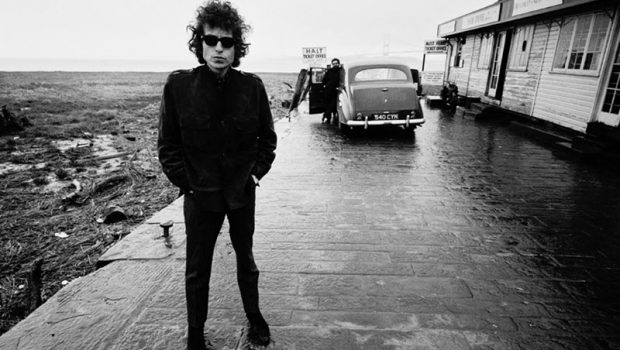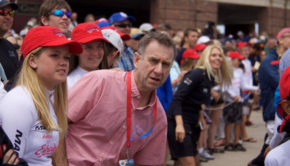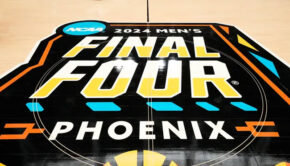Finding what’s blowin’ in the wind
Published on April 19th, 2018
Chris Branning hit our radar during the Morning Light Disney film project which then catapulted him through the US Merchant Marine Academy and now as a sought after offshore sailing navigator.
But when he’s not on the race course, he has been trying to help make offshore sailing easier so people can have more success and enjoyment.
Scuttlebutt editor Craig Leweck checked in with Chris about his latest project, Model Accuracy sailing software.
Navigation has come a long way since the sextant.
It sure has come a long way. I remember using the tactical and navigation software Expedition 11 years ago, and it is now so much easier to use and it is still getting better and better! I see this progression as simplifying the sport as it gets easier and easier to head offshore.
But you recognized a problem with the navigational tools.
The good news is that we have access to a number of weather sources. The bad news is they are not consistent and can lead us to different tactical conclusions. Why do we have multiple sources? I suspect everybody thinks their weather file is the most accurate.
Being the navigator, I had enough data to work with but needed an interface which could compute which source is mathematically the best for a given situation, location and why. I had trouble identifying which GRIB source (a special binary format of weather data) was the most accurate and there was no easy to use tool to help me simplify this process in remote locations like being way offshore. That led us to creating Model Accuracy.
And getting weather info is hugely important?
A prudent navigator is going to download every weather file source they can every six hours to make sure they don’t miss anything and then spend hours trying to sift through the possibilities of routing, ultimately creating a situation of “analysis paralysis”.
Model Accuracy helps that navigator identify which GRIB files have been the most accurate for where they have been sailing (comparing past weather predictions against the actual truth captured by the boat via the wind instruments). Then the process of examining the optimal route is simpler, and easier.
Navigators can make decisions with more confidence knowing they can put more weight on certain GRIBs than others.
How did Model Accuracy get developed?
After wrestling with this problem, I emailed the Computer Science Department at University of Miami explaining who I was and my plight, asking if there were any sailors interested in helping me solve this problem. As luck would have it, two PhD professors there happened to be avid sailors, and they enlisted their friend who is also an avid sailor and computer scientist. Together, we formed Model Accuracy.
Watching Dr. Sutcliffe, Dr. Visser, and Thomas Beavers create this software to help me go faster offshore was just incredible. To say they are brilliant is an understatement. The work they put together has made my job easier in the nav station, and helped me be more confident and calculated in my strategy offshore.
Model Accuracy is the only real time weather file analysis software available for today’s sailor. There is currently no other software that does what we do: provide the navigator and sailing team a real time onboard analysis to determine which weather file source is the most accurate and why (identify trends of forecast error).
The equation for optimal routing from the navigation station, conceptually, is very simple:
VPPs (Performance Polars) + GRIB (weather file) = Optimal Route (where you should sail your boat)
The industry and teams spend tons of money refining the Polars (VPPs) to make sure the predictions of the boat’s performance are actually accurate. But that refines only half of the equation inputs.
The other half is the weather file. Without an accurate weather file you can’t compute the optimal route to learn where you should go.
Model Accuracy helps you choose which weather files to base your routing on, and assures that you are always using the most accurate weather file for a given time and location.
Model Accuracy compares the weather forecast data, in a number of ways, against the real time weather information you capture from your wind instruments. By doing this, we can statistically verify which weather file source (COAMPS, GFS, EC, NAVGEM, NDFD, ECT….) is the most accurate weather source and why!
Essentially, Model Accuracy is the real time “consumer report” on weather files in the middle of the ocean allowing the navigator and team to always know they are navigating off the most accurate weather file, and will even understand error calibrations as necessary to their optimal routes!
Are the navigation tools replacing skill?
I think routing software has actually behaved as a force multiplier for skill. Meaning, it made our skills better. Let me tell you my favorite story about what our software can do.
In 2016 I was navigating the Pacific Cup (San Francisco to Hawaii). A little over three days into the race we essentially had to call a 600 nm lay line. Not an easy thing to do, especially since we had the potential to break the course record, so the consequences were immense if we got this wrong.
By running an analysis of the GRIB files I had downloaded against the instrument data we had captured while underway, I could statistically prove that the GFS grib file was the overall most accurate weather source thus far in the race. Additionally, I could also verify against the graphical plots and trend analysis that the GFS forecast was averaging approx 0.9 knots of TWS under what we found to be the truth on the water, and about 12 degrees right of the TWD I was capturing as well. Even though GFS was the best source it is very important to know the trend error numbers.
Now, not only could I be confident that routing off the GFS weather file was the correct move, I was able to apply those past forecast trends as optimal routing calibrations to the routing computation in Expedition Sailing Software. The result was theoretically a perfectly calibrated optimal route on the best GRIB file I had available, encouraging me to dig further into the corner and sail another 3-4 hrs before jibing than I originally planned.
We did just that, and set a new course record.
Since I was able to identify which GRIBs were also performing poorly for that race I simply stopped downloading them over satellite connection. I calculated we saved about $1,500 in satellite weather download costs.
It is free download the software and join the newsletter (click here) which includes analysis after races.
See which GRIB source was the most accurate for the Carib600 event here: http://www.modelaccuracy.com/historical-race-results/









 We’ll keep your information safe.
We’ll keep your information safe.